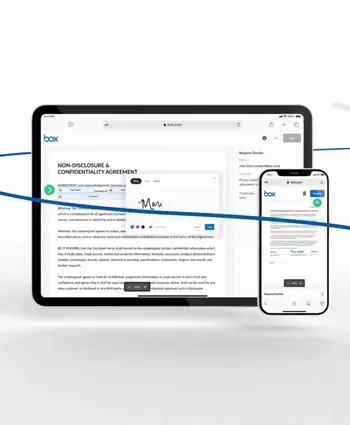
7 Key Video Metrics to Measure the Success of Your Content
Not sure how to track the success of your video content? Our guide to 7 key video metrics will help you cut through the confusion.
So you've launched a new video.
Yes! Awesome!
Or even better: you're about to commission a new video project with a video production agency.
Yes!! Time to celebrate!
Except... wait. You still need to work out what success looks like and how to measure the performance of your video content.
(Otherwise, you'll never know when it's really time to celebrate.)
That means you need to think about video metrics.
Ideally, you'll always do this before you start a new video project, but I realise we live in an imperfect world. And it's true that it's better late than never. (But if you are doing this before your video content has been produced rather than as an afterthought, give yourself a pat on the back.)
This is arguably the most important part of the whole video process. After all, without it you'll never know if your video content was successful.
Read on and I'll guide you through 7 of the most important video metrics, and how to use them to work out just how successfully your video achieved your business or marketing goals.
What Do All These Numbers Mean?
Video metrics can sometimes be confusing or overwhelming, especially if you're new to video.
(And the best video hosts, like Wistia, give you much more information than channels like YouTube.)
Always start with the objectives for your video project. What were you hoping to achieve? From there you can tie specific metrics to your goals and begin measuring success.
It almost goes without saying that the more initial planning you do for you video content, the easier reporting on metrics will be.
Setting your video goals should be your first step, not only will your content itself benefit from greater direction, but you'll have more time to ensure access to all the data you need. Download our Video Objectives Template for a simple document to help you lay out your goals for video.
I recommend measuring a few different video metrics.
You'll want to focus on more than one to ensure you're getting a comprehensive view of the success of your video content, but if you're tracking everything then you probably haven't narrowed down your objectives enough.
And don't just measure the success of your videos for the sake of it. Use your findings to learn, improve, and direct your future video projects towards greater successes.
7 Important Video Metrics
Below are 7 key metrics to help you to track how successful your video content has been against your video objectives. Just click the links to jump to those you're interested in, or keep reading to learn about them all.
|
1. View count |
2. Play rate |
3. Engagement |
|
|
7. Feedback |
1. View Count

The simplest but most deceptive metric of all. View count tells you the raw number of how many times your video has been viewed (as you might expect).
Basically your views indicate the reach of your video content. If you want your video to be seen by millions of people in your target audience, then you'll want to track views. However, be aware that views are counted differently across the web, for example, on YouTube a view is counted once 30 seconds of a video have been watched, whereas on Facebook it's only 3 seconds. So if you've placed your video on various channels, keep this in mind when aggregating data.
If you're looking to boost your video view count, consider these tips:
- Share your video with your audience, through email and social media.
- Share your video with relevant influencers.
- Pay to promote your video on channels where your audience can be found.
Don't take views as the be-all and end-all of your video content. It's nice to know how great your video reach is, but unless your only aim for your video was to spread awareness, it's really just the first step in measuring its success.
2. Play Rate
 Play rate is the percentage of page visitors who actually clicked play and began watching your video.
Play rate is the percentage of page visitors who actually clicked play and began watching your video.
This metric is a good measure of how relevant your video content is to the location where it's placed, and how successful it is at enticing visitors to watch. If you want a certain percentage of your target audience to click play on your video (whether it's an explainer video or a promotional video), play rate is the number to keep an eye on.
If you want to increase your play rate, try the following:
- Increase the size of your video embed or move its position on the page.
- Pick a more engaging, vibrant, eye-catching and relevant thumbnail.
- Change the copy around the video to make sure it accurately communicates its content.
- Move your video to a different page, maybe it would be more appreciated elsewhere.
Not all videos will have equal play rates. It doesn't just depend on the attractiveness of the video, but also its content. A video that appeals broadly to everyone in your target audience will likely have a higher play rate than a supplemental, specialised video.
3. Engagement
 Here's when we get to the real meat of how effective your video is.
Here's when we get to the real meat of how effective your video is.
Engagement for each viewer shows you how much of your video they watched, and is expressed as a percentage. Average engagement, also a percentage, tells you how much of your video all viewers watched on average.
This metric is incredibly useful, especially if you see it expressed as an engagement graph which shows how your audience as a whole watched, re-watched and stopped watching your video (learn more about engagement graphs here). With this data you can start to gauge the quality and usefulness of your videos.
Are viewers watching all the way to the end, as they might do with a story-driven narrative? Or jumping around to view specific parts, as they might do with a Q&A video? If you have a Call-to-Action (CTA) at the end of your video you'll want your audience to reach it, but with an engagement graph you may realise that lots of your audience are dropping off before that point.
To improve your video engagement, here are some of our recommendations:
- Keep your video content short, concise and clear. If something is unnecessary, cut it.
- Fulfil your audience's expectations, this ties into accurate communication on the page around the video. If a viewer expects an explanation of how to use your product but is greeted by an advert about why they should buy it, they'll probably stop watching.
- Pay attention to your average engagement, and especially engagement graphs. If viewers are stopping watching at certain points, work out why and change your video.
Engagement is relevant to almost every type of video in every type of industry. After all, at the end of the day you want your video to be watched. Just keep in mind the purpose of your video and be aware that a low average engagement isn't always a terrible thing.
4. Social Sharing
 This is a metric you'll no doubt be familiar with. Social sharing shows how much people are sharing your video content, usually measured by numbers of shares across social channels.
This is a metric you'll no doubt be familiar with. Social sharing shows how much people are sharing your video content, usually measured by numbers of shares across social channels.
Although it might not appear to mean much by itself, social sharing leads to more views for your video which generally leads to more sharing. It's also a good measure of how appealing your video is to your target audience (and others), and how willing they are to spread the word about it. This all leads to greater awareness of your business or brand as well as an opportunity to tap into a larger portion of your target audience.
If your video objective is to reach the largest audience possible, you'll probably focus on this metric along with view count. You can increase social sharing by following these tips:
- Ask your viewers to share your content, just asking can go a long way.
- Specifically create content to be shared. That means it should probably be educational, entertaining or emotional, and it has to be able to stand alone.
- Kick-start the sharing of your video by passing it onto influencers relevant to your target audience.
But don't just pay attention to the number of retweets you get. Also keep track of the comments you receive about your video, and whether people are saying positive or negative things.
5. Click-through Rate
 Another metric that isn't unique to video, click-through rate (CTR) is the percentage of viewers that click on whatever CTA you include in your video content.
Another metric that isn't unique to video, click-through rate (CTR) is the percentage of viewers that click on whatever CTA you include in your video content.
Your CTR will give you an indication of how successful your video is at encouraging viewers to take action. Of course, nobody will click on your CTA if they don't watch enough of the video to see it, so keep an eye on engagement too. The click-through rate metric is most important if you're looking to drive your audience on after watching your video.
To improve the CTRs in your video content, we suggest you:
- Alter your CTA. Try placing it at a different point in your video, or make it more visually appealing.
- Improve your average engagement first, especially if viewers are dropping off before reaching your CTA. The more of your video viewers watch, the more likely they are to click through.
- Make your CTA highly relevant to the content of your video.
Always make sure your CTA matches the video it's placed in. It should not only be relevant to the video topic, but should also fit the tone and look of the video.
6. Conversion Rate
 Conversion is the number of leads or customers that you have gained thanks to a piece of video content. Depending on the conversion opportunities on your site, they might have filled in a form, subscribed, made a purchase, or otherwise converted. This number can also be expressed as a percentage of all viewers that convert (your conversion rate).
Conversion is the number of leads or customers that you have gained thanks to a piece of video content. Depending on the conversion opportunities on your site, they might have filled in a form, subscribed, made a purchase, or otherwise converted. This number can also be expressed as a percentage of all viewers that convert (your conversion rate).
This metric is a little trickier to track, and will probably involve some setting up through a separate analytics software to your video host, such as Google Analytics. You'll also have to work out your attribution model. Basically, how much will watching your video count towards the eventual conversion of that viewer? Does it only count if watching the video was the last thing they did before converting? Or does video get some percentage of attribution, along with every other step that viewer took before converting?
Conversion is a vital metric to measure if you're producing product videos or other types of video with a goal to increasing your conversion rate, and therefore gaining more leads or customers. You can improve conversion with these tips:
- Make your video relevant to what your target audience wants to know at that stage of the funnel.
- Always provide valuable information; answer your audience's questions or allay their fears.
- Place your video in the right area of your site to help drive conversions.
Video can be a great tool to help boost your conversion rate, whether that's getting more visitors to sign up to your newsletter or encouraging repeat customers to buy from you again.
7. Feedback
 The final key metric is feedback on your video, which we touched briefly on in social sharing. This isn't a number but rather the qualitative data you can gain by tracking how viewers react to and comment on your video content.
The final key metric is feedback on your video, which we touched briefly on in social sharing. This isn't a number but rather the qualitative data you can gain by tracking how viewers react to and comment on your video content.
To get a true feel for the reception of your video, you'll need to listen to your target audience and the communities they engage with. Keep a note of both the digital and in-person comments you hear. Try to judge the tone of these comments, and thereby the overall reaction to your video. Positive is generally better than negative, but human emotions are complex and you may not always be looking for that kind of feedback. For example, many charity videos are built upon expressing a negative emotion to their audience, like sadness or pity.
Because of the qualitative nature of feedback, it's hard to suggest ways to "improve" this metric. However, don't forget this more human side of the data and don't be afraid to use it as evidence to create video content more tailored to your target audience in the future.
Round-Up: Better Metrics = Better Video
These are the most important metrics when it comes to measuring the success of your video content, but they aren't the only ones.
You may want to track more specific metrics depending on your video objectives, for example, when creating a Q&A video to address common concerns, you may want to monitor if the number of calls your support staff receive are reduced.
Pay attention to the data but don't jump to conclusions. Think about why things have changed, whether for better or worse, and what this will mean further down the line. It might seem like boosting your conversion rate is always a good thing, but it's not if every new customer you gain is the wrong fit for your business.
Most of all, remember to learn from these metrics to continually improve with each new video.
Written by Jonathan English Managing Director for Venture Videos — a full-service video production agency that specialises in producing creative videos & campaigns that get real results.


![How to Write a Video Brief in 7 Easy Steps [Free Video Briefing Template]](https://www.venturevideos.com/hubfs/Download%20images/video%20production%20brief%20template%20optimised.webp)



